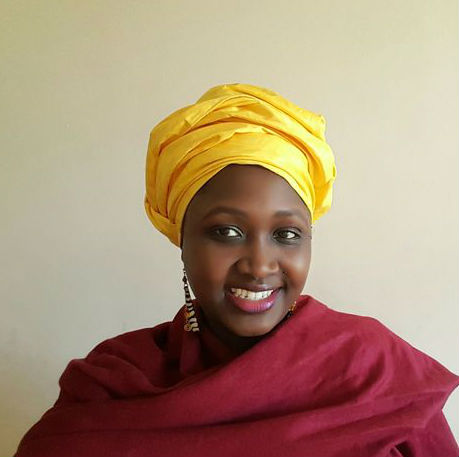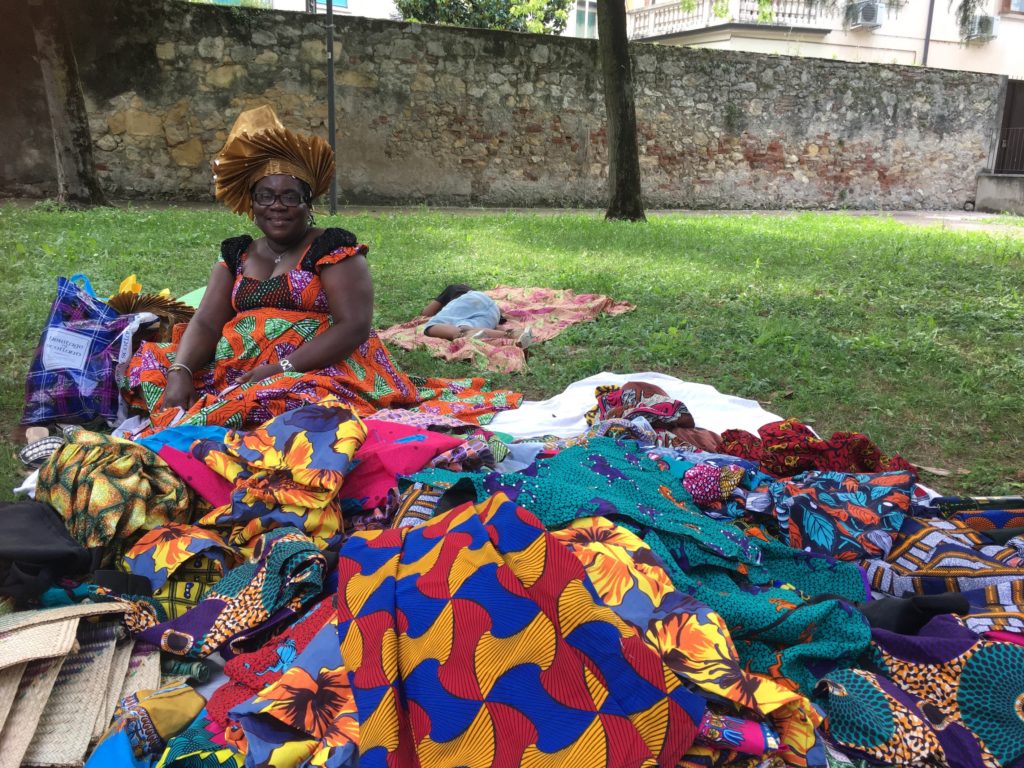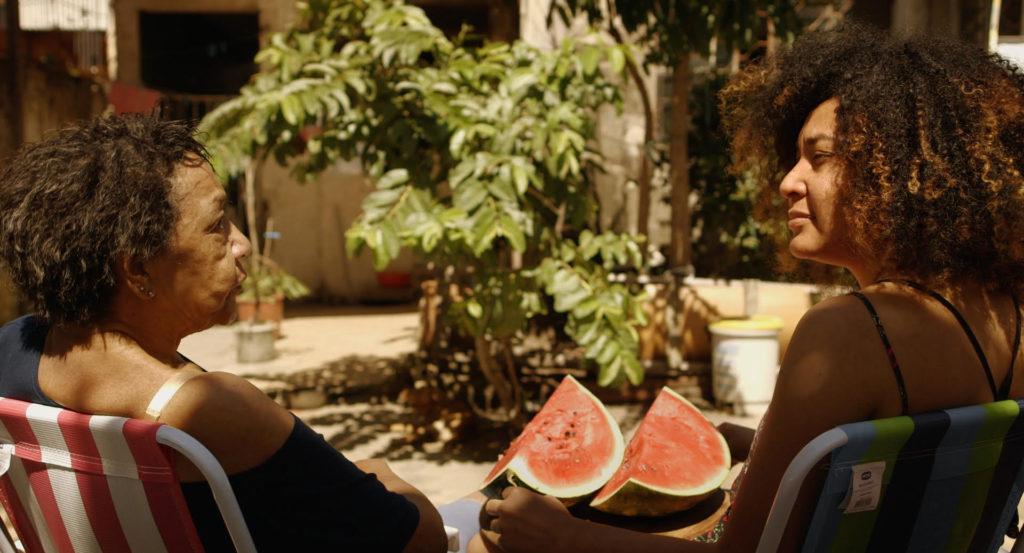“10 Migrant Stories,” tells stories of women and non-binary migrants from Latin America.
✍🏾Juliana da Penha
In 2019 the number of international migrants globally reached an estimated 272 million, an increase of 51 million since 2010. 48% of them are women. We know about the numbers, but who are these people? What are their stories? Usually, migrants are portrayed without a human perspective. And there is a lack of attention to women and non-binary people experiences. Also, some parts of the world are absent in the international media coverage about migration, like Latin America.
The same 2019, Chicas Poderosas launched “10 Migrant Stories”. The idea was “Telling these stories differently and bridging the gap in the media coverage about migration” explained Belén Arce Terceros. She is Director of Communication and Editorial Projects of Chicas Poderosas, a global community creating opportunities for women leadership in media through collaboration, training and other projects
In “10 Migrant Stories”, Chicas Poderosas brings narratives of people like Maria, an indigenous teacher from Guatemala who migrated to Mexico for virtual love. Also, Claudia Vazquez Haro, a Peruvian transgender woman founder of the organization OTRANS supporting the rights of trans communities in Argentina. The journey of the Colombian rapper Valencia to Bolivia, where close to Uruguayan women she found her strength. The transition of Isa Saturno, a writer from Venezuela sharing his experience as a transgender man living in Miami.
“Focusing on people’s migratory experiences, telling these stories with a gender and diversity perspective, and from the understanding that immigration is a human right”, says Bélen.
Interview with Belén Arce Terceros
Who are Chicas Poderosas?
Belén: Chicas Poderosas is a global community that promotes change by inspiring and fostering the development of women in media. And also creating opportunities for all voices to be heard.
Chicas Poderosas provides women working in media with opportunities for professional development. It creates spaces for collaborative and innovative projects, making under-represented issues visible in the media.
It was launched as an organization in 2014 and was created by Mariana Santos when she was a Stanford Fellow. Today it is present in 17 countries: Argentina, Bolivia, Brazil, Chile, Colombia, Costa Rica, Ecuador, El Salvador, Mexico, Peru, Guatemala, Honduras, Venezuela, Portugal, Spain, United States, and Uruguay.
“We created “10 Migrant Stories”, intending to tell these stories differently. Focusing on people’s migratory experiences, telling these stories with a gender and diversity perspective. And from the understanding that migration is a human right.”
How did the idea of the “10 Migrant Stories” come out and what were the motivations for creating this project?
Belén: In 2018, Argentina debated the legalization of abortion that was finally not approved by Congress. The Argentine community of Chicas Poderosas began to think about how to contribute to the debate from a regional perspective. Taking advantage of the network of journalists and communicators that we have in different Latin American countries. Then, it was decided to create a local report that would give an account of the situation in which women have abortions in the region. Also making visible the obstacles they face and their struggles to access their rights. Thus, collaboratively, among 28 journalists from 18 countries in the area, the project “Abortion in Latin America” was created. This publication had a lot of repercussions. It was published in international media and helped us realize all the possibilities that the global network of Chicas Poderosas opens up.
Taking up this idea, last year, we proposed to do a second regional and collaborative investigation. Telling another story of migration: that of women and non-binary people who migrate throughout Latin America. Stories that are often not mentioned or are told without focusing on their human experiences or without a gender perspective. Thus, we created “10 Migrant Stories”, intending to tell these stories differently. Focusing on people’s migratory experiences, telling these stories with a gender and diversity perspective. And from the understanding that migration is a human right.
From Chicas Poderosas, we open a call to find different stories of migration in the region. More than 60 proposals arrived from other countries. In a demanding selection process, we chose ten stories that tell of different migratory trajectories, various obstacles faced by women and non-binary people. And also different contexts from and to which to migrate.
Some stories make situations of rights violations visible, as well as stories of overcoming and growth.
Once the stories are chosen, we worked closely with the reporters to shape these stories together, in a collaborative way, and to accompany the reporting work.

Migration in Latin America is underreported in most of the world’s media. Women and non-binary people are invisible in media coverage of immigration, and your project focused on that. Why do you think mainstream media do not cover these issues? And why is it essential to create a project like this?
Belén: Today, we see that migration appears in the news when there are significant population movements. It is the case of the Migrant Caravan or the displacement of thousands of people on foot from Venezuela that we saw last year. Or when there are news stories related to security issues, when a migrant commits a crime. Or when there are severe violations of their rights that become visible through substantial efforts, as the case of family separations in the United States in recent years. But there are many other experiences of migration that are not told in the media, that are not represented.
If it is not in exceptional situations, migrants are not news. And even when they are, as is the case with Venezuelan migration, coverage tends to focus on numbers and government responses. Stories rarely concentrate on understanding why people migrate, how they migrate, and how they experience the migration. Another uncovered theme, perhaps because it is no longer as spectacular as a massive population movement, is how they integrate into the societies they arrive in. Beyond the xenophobic attacks that some people experience, which so often appear in the news, what happens to other migrants when they come into a new society?
We thought it was fundamental also to understand this part of the migration, the human experiences, and to understand how women and non-binary people live them in different ways. Many times, as these stories show, they face more challenges, are more at risk and also live in other situations. We wanted to tell different stories, less linear, where the paths are not so clear; stories that show that migration can mean many things. Even if they are not news, we felt that we have to give place to these stories and these voices, to understand better what is happening in the region.
“To migrate is to leave, to mutate, to arrive. To migrate is to survive, to organize, to fight. It is to flow, to belong, to remain. To migrate is also to return and be reborn. Because there is not just one way to migrate, there are many,” we write in this unique article.
“We wanted to tell different stories, less linear, where the paths are not so clear; stories that show that migration can mean many things. Even if they are not news, we felt that we have to give place to these stories and these voices, to understand better what is happening in the region.”
What are the outcomes of this project?
Belén: The main result is the “10 Migrant Stories”, reflecting ten different experiences of migration of women and non-binary people.
Also, these stories are told in various formats, to reflect the diversity that exists in the forms of movement. We have a podcast, an audio chronicle, a book, a photo essay, a video chronicle, and more.
The other result of this project is the collective learning that took place throughout the creation of the stories, in a joint effort of reporters and the editorial team. For Chicas Poderosas, it is fundamental to create spaces for collaboration and where we can create community, to look for other ways of working where cooperation and mutual support, listening and accompaniment are the most important. And we saw that this also had an impact on the stories and how they were told.
The talks that the editorial team had with the reporters also nourished the stories and led us to explore new ways of telling these stories. Finally, it is to generate a conversation about the migration experiences of women and non-binaries in Latin America. Also, to engage our community and our audience in rethinking how we see and understand migration, to invite them to learn about different migration trajectories and to realise that listening to migrants should be at the heart of how we tell about migration.
“To migrate is to leave, to mutate, to arrive. To migrate is to survive, to organize, to fight. It is to flow, to belong, to remain. To migrate is also to return and be reborn. Because there is not just one way to migrate, there are many.”



